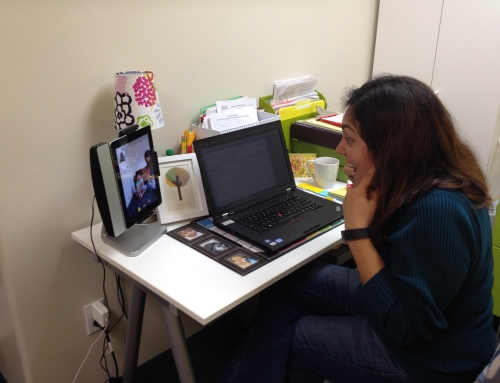Our researchers are back in the labs now, after the ARO MidWinter Meeting. We will have a brief update the blog soon, but we wanted to share some exciting news:
Stanford was well represented at the meeting, and excitingly won two awards!
Dr. Alan Cheng was the recipient of the Geraldine Dietz Fox Young Investigator Award for achievements in research on hearing and deafness. This award is a great honor and recognition of his hard work toward protecting hearing, and curing hearing loss via regenerative methods.

Photo by David Lim
The second was the Poster Blitz First Prize, which went to Peter Gottlieb, a PhD Candidate working with Sunil Puria in the Otobiomechanics Group.

Photo by David Lim
Peter’s poster was titled: 3D Vibrational Measurements and Principal Axes of Rotation of Middle Ear Ossicles in the Mouse.
He describes the research below:
The presence of three distinct ossicles in the middle ear is a ubiquitous and uniquely mammalian trait, yet the benefits conferred by this complicated anatomy are still debated. Classically, the middle ear has been thought to vibrate about an “anatomical axis” defined by the attachments of the ossicles to the surrounding bone. In many mammals, however, this axis lies orthogonal to the first principal axis of the malleus and incus. Thus, vibration about this anatomical axis at high frequencies is limited by the inertia of the ossicles. One hypothesis contends that the complicated mammalian middle ear allows the ossicles multiple modes of vibration in order to minimize the effects of inertia at higher frequencies of vibration. The mouse provides a particularly interesting test of this hypothesis. In addition to its scientific value, a deep understanding of these vibration modes is important for the design of next-generation middle ear prostheses.
Previous 1D studies of the mouse ossicles suggested that despite evidence of complicated motion at high frequencies, the anatomical axis remained the primary mode of vibration throughout the frequency range of mouse hearing. Using fully 3D vibration measurements, we found that the ossicular motion in the mouse does deviate from vibration about the anatomical axis, and propose new, experimentally determined modes of vibration at both low and high frequencies.
Congratulations to both, and keep up the excellent work!




